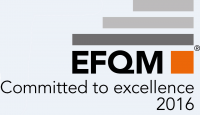Topics for pediatrics exam
I. General pediatrics
I/1. Special ethical issues in Pediatrics
I/2. Normal growth (newborn-infant)
I/3. Normal growth (toddlerhood - adolescence)
I/4. Normal development (newborn - infant)
I/5. Normal development (toddler - adolescence)
I/6. Breastfeeding
I/7. Formula feeding
I/8. Principals of normal nutrition in childhood
I/9. Failure to thrive
I/10. Obesity in children
I/11. Pediatric Undernutrition
I/12. Role of prevention in Pediatrics
I/13. Newborn screening
I/14. Vaccination, immunisation programme in Hungary
I/15. Child protection
I/16. Taking history in Pediatrics
I/17. Physical examination in Pediatrics
I/18. Laboratory testing in Pediatrics
I/19. Microbiological tests in Pediatrics
I/20. Normal haematological values in children
I/21. Normal biochemical values in children
I/22. Acid-base disorders
I/23. Electrolyte disorders
I/24. Radiological investigations in Pediatrics
I/25. Basic principles of Pediatric Pharmacology
I/26. Antibiotic therapy in Pediatrics
I/27. Pharmacological treatment of pain and fever in children
I/28. Water soluble vitamins’ role in Pediatrics
I/29. Lipid soluble vitamins’ role in Pediatrics
I/30. Trace elements’ role in Pediatrics
I/31. Management of a febrile infant
I/32. Fever without a focus
II. Pediatrics Specialities
II/1. Common viral infections in Pediatrics
II/2. Common bacterial infections in Pediatrics
II/3. Neuroinfections
II/4. Parasitic infections in Pediatrics
II/5. Sexually Transmitted Infections, HIV
II/6. Fungal infections in Pediatrics
II/7. TBC
II/8. Endocrine emergencies
II/9. Evaluation of growth retardation, short stature
II/10. Disorders of puberty (precocious/delayed)
II/11. Disorders of the adrenal gland
II/12. Disorders of the thyroid gland
II/13. Disorders of the hypophysis
II/14. Disorders of parathyroid gland (bone and mineral)
II/15. Disorders of sexual differentiation
II/16. Diabetes mellitus in childhood
II/17. Evaluation of hypoglycemia in childhood
II/18. Physiologic characteristics of the newborn, term and preterm infants
II/19. Maternal diseases affecting the newborn
II/20. Respiratory diseases of the newborn 1. (TTN, MAS, pneumonia)
II/21. Respiratory diseases of the newborn 2. (RDS, BPD, apnea, congenital malformations)
II/22. Fetal circulation. Persistent fetal circulation. Primary pulmonary hypertension of the newborn.
II/23. Neonatal physiologic jaundice
II/24. Pathologic jaundice
II/25. Congenital infections
II/26. Hypoxic ischemic encephalopathy, neonatal convulsion
II/27. Early onset, late onset neonatal sepsis
II/28. Neonatal meningitis
II/29. Neonatal resuscitation
II/30. Chronic lung disease/Bronchopulmonary dysplasia of the neonate, Retinopathy of prematurity (ROP)
II/31. Necrotizing enterocolitis
II/32. Neonatal intracranial hemorrhage
II/33. Persistent ductus arteriosus
II/34. Congenital malformations of the central nervous system
II/35. Developmental delay
II/36. Headache and migrain in childhood
II/37. Febrile seizure
II/38. Infantile cerebral paresis
II/39. Epilepsy
II/40. Hypotonia
II/41. Infections of the CNS
II/42. Demyelinating diseases fő the central and the peripheral nervous system
II/43. Neuromuscular diseases (diseases of the lower motor neuron)
II/44. pBLS
II/45. Fluid therapy in emergency care and PICU, severe electrolyte disturbances and treatment
II/46. Sepsis and septic shock management
II/47. Cardiogenic shock: different etiologies and their management (arrhythmia, CMP, CHD, toxic-metabolic)
II/48. Respiratory management in PICUs
II/49. Pediatric traumatology (burn injury primary care, head trauma management)
II/50. Pediatric traumatology (airway and GI foreign body management, drowning)
II/51. Pediatric accidental injuries, conditions (poisoning)
II/52. Diagnosis of neonatal and pediatric cardiac diseases
II/53. Congenital heart defects with left-to-right shunt (diagnosis, therapy)
II/54. Congenital heart defects with right-to-left shunt (diagnosis, therapy)
II/55. Congenital heart defects left heart obstruction (diagnosis, therapy)
II/56. Congenital heart defects with mixed shunts, duct dependent congenital heart defects (diagnosis, therapy)
II/57. Arrhythmias (Tachycardia, Bradycardia, Extrasystole, Long QT syndrome)
II/58. Symptomes and treatment of heart failure
II/59. Cardiovascular medication (anticongestive treatment, closure/opening
of the ductus arteriosusantiarryhthmic therapy)
II/60. Cardiomyopathies
II/61. Chest pain – differential diagnosis
II/62. Congenital urinary tract malformations
II/63. Urinary tract infection in children
II/64. Nephrosis syndrome
II/65. Nephritis syndrome
II/66. Tubulopathies
II/67. Acute kidney injury
II/68. Chronic renal failure
II/69. Hypertension
II/70. Enuresis
II/71. VUR (Vesico-ureteral reflux disease)
II/72. Gastro-oesophageal reflux disease
II/73. Peptic ulcer disease
II/74. Pyloric stenosis
II/75. Oesophageal atresia, TOF, achalasia, duodenal atresia, small bowel atresia
II/76. Malabsorption/malnutrition syndromes
II/77. Inflammatory bowel disease
II/78. Food adverse reactions
II/79. Neonatal cholestasis syndrome
II/80. Pancreatitis
II/81. Congenital disorders of the respiratory tract
II/82. Pulmonary physiology, pulmonary function tests
II/83. Disorders of the pleura (pneumothorax, pleuritis etc)
II/84. Upper resiratory tract infections (e.g. laryngitis etc.)
II/85. Foreign body aspiration
II/86. Infections of the lower airways: bronchitis, bronchiolitis
II/87. Communitiy acquired bacterial pneumonia
II/88. Atypical pneumonia in children
II/89. Tuberculosis
II/90. Pulmonary hemorrhage and hemopthysis
II/91. Pulmonary edema
II/92. Asthma bronchiale
II/93. Cystic fibrosis
II/94. Ciliary dyskinesia
II/95. Anemias in pediatrics
II/96. Iron deficiency anemia, B12, folic acid deficiency
II/97. Membran and enzyme defects, autoimmun haemolytic anaemia, hemoglobinopathies
II/98. Coagulopathies in children
II/99. Bleeding disorders due to platelet problems
II/100. Acute leukemia in pediatrics (ALL, AML)
II/101. Most common solid tumors in pediatrics
II/102. Lymphoma in childhood
II/103. Side effects of chemotherapy
II/104. Structure and function of the immune system
II/105. Classification, presentation and investigation of immun defects
II/106. Combined T and B-cell defects
II/107. Immun defects in connection with genetic syndromes
II/108. B-cell defects
II/109. Phagocyte defects
II/110. Complement defects
II/111. Immunsuppression and immune modulating treatment in childhood
II/112. Intoxication type of metabolic disorders
II/113. Disorders of energy metabolism
II/114. Disorders of storage diseases
II/115. General rules of inborn errors of metabolism
II/116. Newborn screening of inherited metabolic disorders
II/117. Henoch Schönlein purpura
II/118. Kawasaki disease
II/119. JIA (Juvenile idiopathic arthritis)
II/120. SLE (Systemic lupus erythematosus)
II/121. Basics of developmental psychopathology
II/122. Epidemiology and classification of mental disorders in children and adolescent
II/123. Case formulation and integration of information in child and adolescent mental health
II/124. Adolescent crises, suicide
II/125. Numerical chromosomal disorders
II/126. Most common pediatric conditions with autosomal dominant inheritance
II/127. Most common pediatric conditions with autosomal recessive inheritance
II/128. Most common pediatric conditions with X-linked inheritance
II/129. Intestinal atresias (Esophageal atresia, TOF, duodenal atresia, intestinal atresia)
II/130. Gastroschisis, omphalocele, omphaloenteric duct remnants (Meckel's diverticulum)
II/131. Hirschsprung's disease. Anorectal malformations
II/132. Appendicitis, Intussusception, pyloric stenosis
II/133. Congenital diaphragmatic hernia
II/134. Cleft lip and palate
II/135. Congenital urinary tract malformations 1.: Hypospadias, pyelo-ureteral junction stenosis
II/136. Congenital urinary tract malformations 2.: vesico-ureteral reflux,
uretero-vesical junction stenosis, posterior urethral valve
II/137. Hydrocephalus
II/138. Inguinal hernia, hydrocele, undescended testis, acute scrotum
II/139. Head injury (cerebral commotion, epidural bleeding, subdural bleeding)




